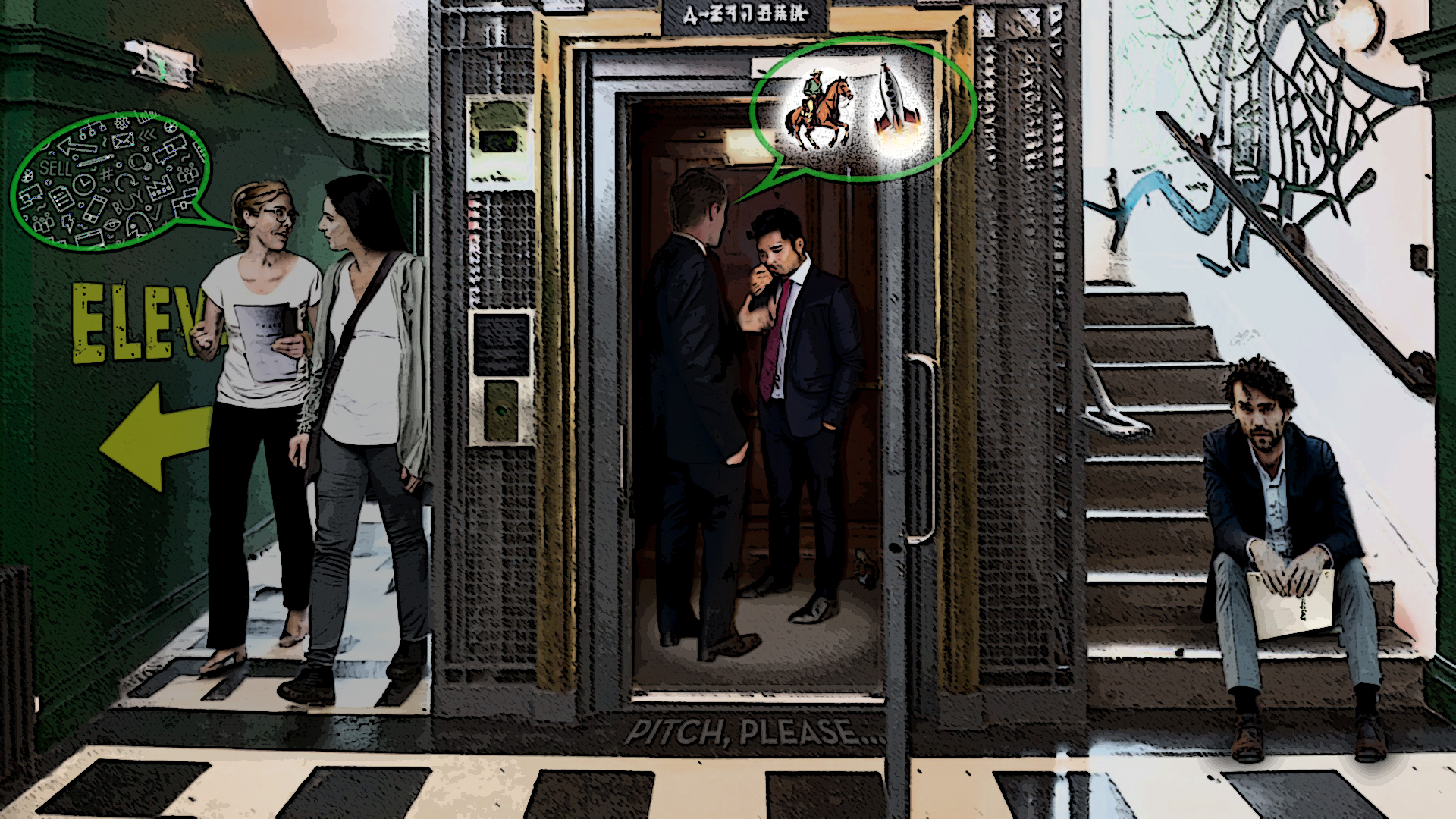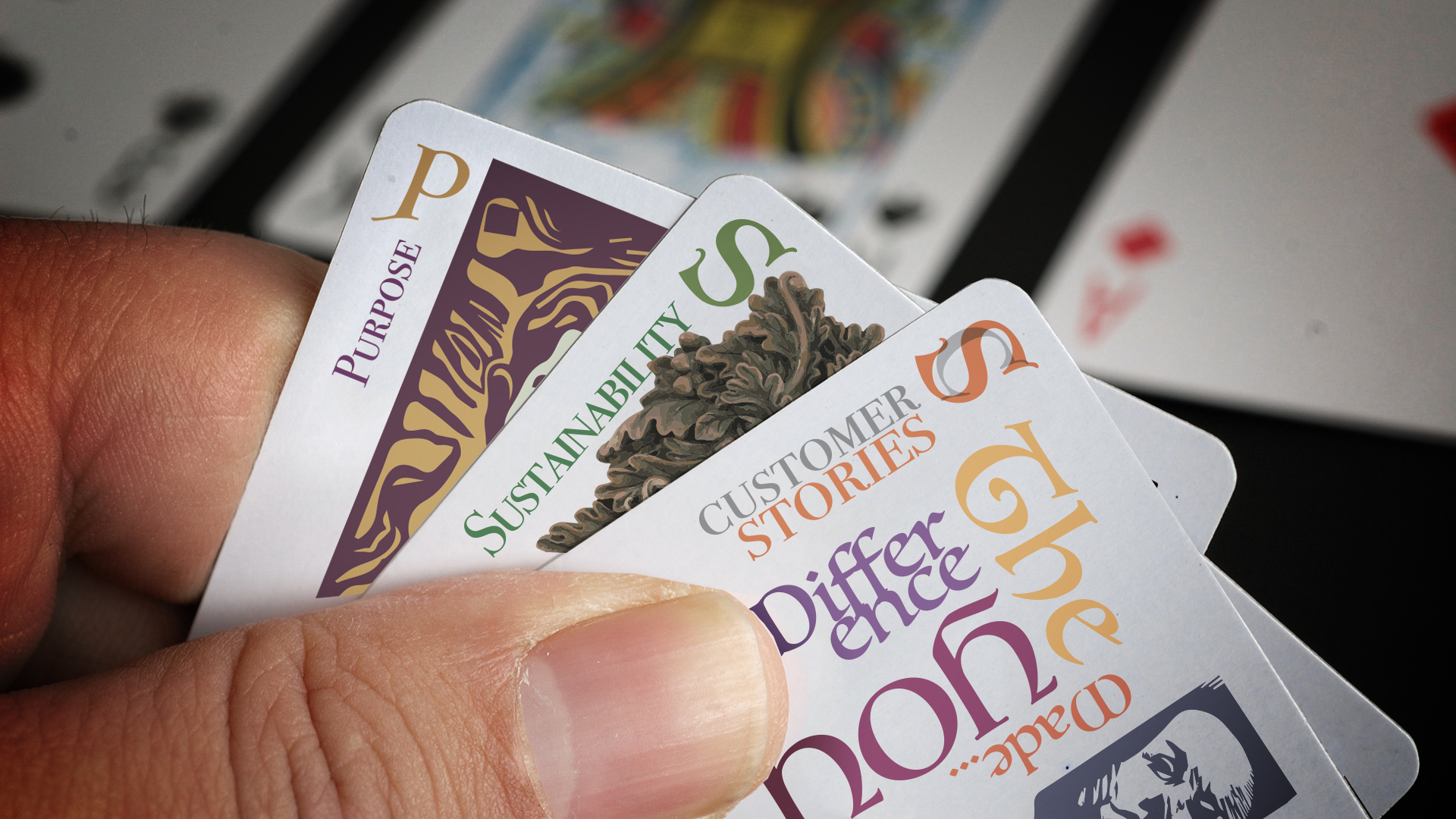It can leave you feeling tongue-tied. The moment the spotlight is thrown on you and you’ve got that tiny slice of time to explain what you do to somebody, in a compelling way. That’s when you’ll wish you’d taken the chance to build your best 2 minute story.
In the pre-hybrid days we called it an elevator pitch – the story you could tell in the time it took the lift to take you up a few floors, so that by the time the doors opened your companion would say ‘wow, sign me up!’ The confines of a time-pressure and a confined space mean the story has to be short, personal, highly engaging and leave the listener in no doubt as to what you’re all about.
"The best pitches work like film trailers, moving the audience into a different emotional state."
The best pitches work like film trailers, moving the audience into a different emotional state, and making them really keen for more. But first things first. What does your pitch need to convey?
At the most basic factual level your pitch needs to highlight the difference you (and your businesses) aim to make, for which sorts of customer, and how your products or services make that possible. The basic facts give your listener a clear picture of where you sit in the market, and make you credible.
It’s good to remember that while a pitch is about you, it’s ostensibly more about the person listening. Customers don’t care about the details of your products and services. They care about themselves and their problems. They want to know, are you someone who can help ME solve MY particular problem?
Your story in 2 minutes
A handy way to condense these pieces of information in a way that sounds natural is to write your audio logo*. This is your verbal response to the often asked question ‘and what do you do?’
Here’s our version of the basic audio logo formula
We do | “We aim to make this difference”
For | “To these kinds of people” (our customer)
Because | “Who have this issue or challenge”
How | “How we do this is…”
Here’s a very silly example:
We do | We protect your Instagram-perfect face, should you accidentally collide with a lamp post, a closed door or – heaven forbid –
For | …another person as engrossed in their phone as you are.
Because | Why shouldn’t you hang out with your friends and their stories whenever and wherever you like – without risking your gorgeous features!
How |Our toughened, crystal-clear nose guard invisibly protects you all day long. 3D printed to fit the exact shape of your schnozzle.
Suggested reading | In Mind the Gap, we’ve written more broadly about how to really understand what your customer needs, and where you fit in their solution.
Beyond neatly summarising the core of your business, a good pitch creates an emotional hook. And that’s good to aim for. An emotional connection makes you memorable and can inspire people to engage and move. Pitch it right, and you’ll stir your audience into action. You can do that within the confines of the formula above in the way you bring your target market to life and describe their world. Obviously our example is facetious and fictional (…though we ought to search Amazon to be sure, right?), which makes it easy for us to exaggerate the key points of focus.
MasterPitch
Right, you’ve nailed the basics. Now’s the time to consider two more factors: context, and confidence.
Context is your best friend. If we are pitching our nose protector at a show for beauty products, you can be pretty sure your audience is in the mood and has the means to preserve their good looks. You could argue that the aim of your pitch is to secure wallet-share, rather than mindshare.
Here’s where a real customer example pays dividends. It fits best at the end of your pitch.
Adding a brief customer story
“Alex, a customer, told me about this time when he was FaceTiming a friend while walking through a revolving door at work. The door just stopped – bam. Door hits phone, phone hits face – ouch. But he walked away with his nose – and his smile – intact.”
If fundraising to bring your nose protector to market is your goal, you’re in a different ball game. It’s the Dragon’s Den, so how would you open your pitch now? Of course you’re going to need a lot of detail at some point – addressable market, investment numbers and projected returns
Metaphor can help, by making the uncertain feel more familiar. You be the judge of when to throw one in. If you were trying to bring our nose protector to market, you might try:
Adding some ‘think about it this way’ metaphor
“Remember the time when sunscreen was the messy stuff your mum nagged you to apply, usually after you started turning red? No one behaves that way now, do they. Today, sunscreen is built into daily moisturiser and makeup. It’s sold as protection against premature ageing, rather than for its health benefits. And products with an SPF number attract a premium compared to those without. So…”
Or
“Did you know that the glass on the front of your phone is one of the hardest, most scratch-resistant materials on the planet? And yet millions of people buy custom screen protectors every day. Why? Because they’d rather feel safe than sorry. Now, what if we could also bring protection to the face that’s facing the phone? Well…”
A measure of confidence
Confidence is the final ingredient in a masterpitch. This is a delicate matter, with plenty of nuance to consider. Have you ever been pitched by someone who is too confident? Where you’re left wondering “Is anyone going to ask me what I think?” The flip of that is the person who stumbles, won’t hold eye contact, is obviously desperate to be somewhere else.
"Confidence starts from competence. Practise your pitch."
For us, confidence starts from competence. Practise your pitch. Record yourself delivering it using your phone – that’s a great way to understand how it looks and what it sounds like in another’s eyes and ears – and tweak it until you’re comfortable. Try delivering it with other words, and different examples too, because in reality no two pitches should ever be exactly the same.
Pour in passion
Another layer of confidence comes from passion and belief. You can inspire yourself and move your audience by adding your mission to the mix. Not just what you do, but why you do it. The place for a powerful mission statement could be upfront, as a scene setter. You want something that grabs and holds attention right away, so a pithy summary of what motivates you to pour your energy into this particular endeavour could fit the bill.
Your ‘why’
“When I was a kid, racing my friends across the playground and busting a gut to get there first, someone gave me a gentle shove from behind. But I fell and split my nose. You can still see the scar – here. Today’s hazards are more subtle, right? But we’re also much less focused on where we’re headed. My mission is to make sure no-one smashes their nose needlessly, whatever their playground happens to be.”
There’s that film trailer feel, right there. The point where you switch from the drone shot, bird’s-eye view of your purpose, and zoom to the close up that captures your impact precisely.
Bear this in mind, lastly. There are lots of finesses you can play with and make your own. But the basic recipe – like a well made G&T – works for just about anyone, just about anywhere. So go mix one, and enjoy.
[* Shout out to Robert Middleton at Action Plan Marketing, who first coined the term audio logo, and created the basic formula we’ve riffed around above. Here’s Robert’s original article, if you want to know more about the origins and evolution of the audio logo formula.]






What do you think?